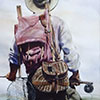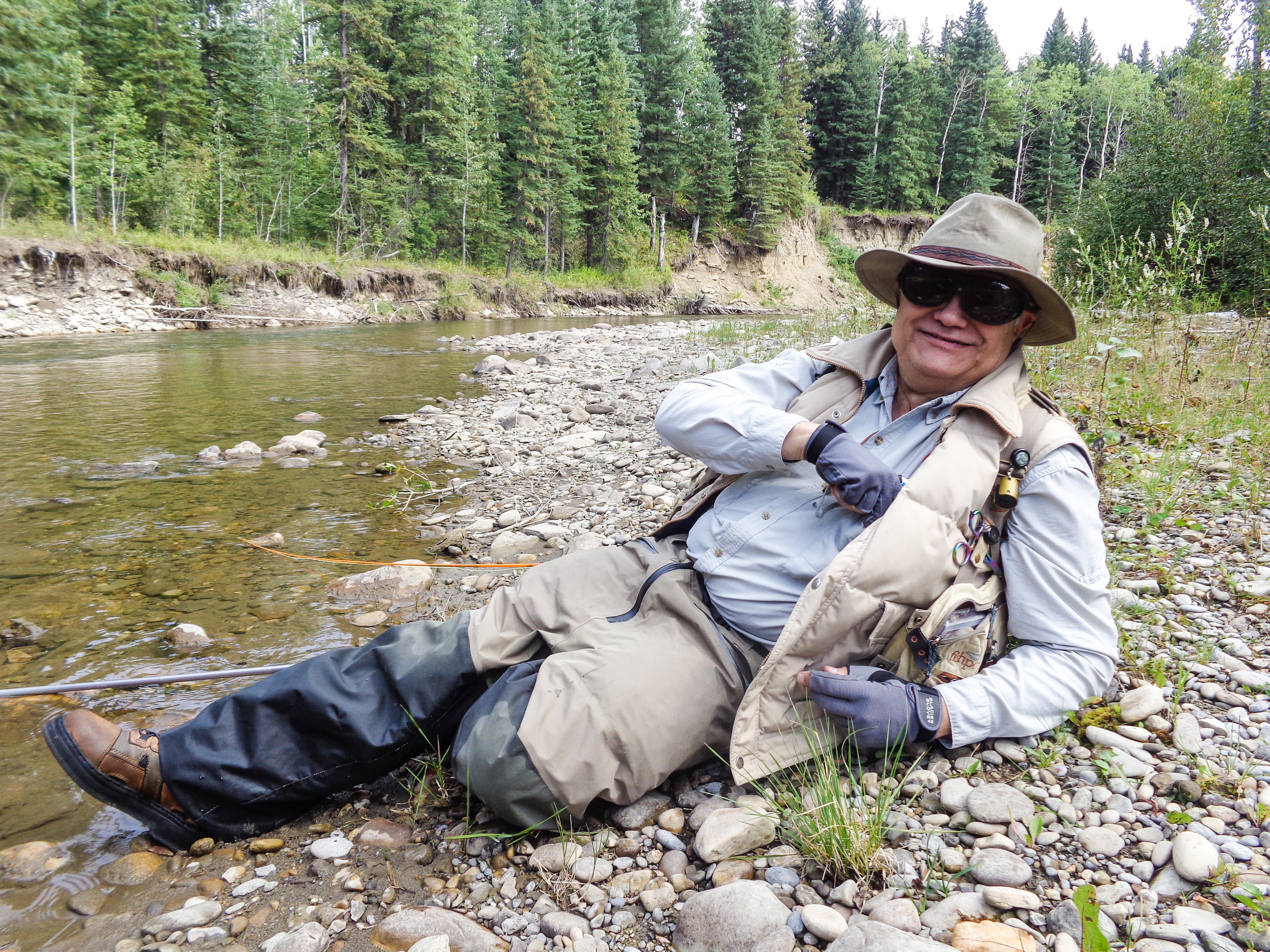-
Posts
4,690 -
Joined
-
Last visited
-
Days Won
362
Content Type
Profiles
Forums
Events
Store
Everything posted by SilverDoctor
-
Nice colors
-

Dedication Of Barry Mitchell Pond
SilverDoctor replied to Flashback's topic in General Chat - Fly Fishing Related
Wonderful for a great guy. -
2 kinds of Stimmies both standard and bushy.
-
Always with good customers
-
A Doz Elk Hair, part of an order going out. Back in the 70's I took a summer off University and traveled some of the legendary Trout streams in the US. That I had only read about. One of the tier's that I was blessed to sit down with was Al Troth creator of the Elk Hair Caddis. Since then I tie these in his style.
- 216 replies
-
- 11
-

-
Don't car for it, sinks my dry fly too deep
-

Your Favorite Dry Fly Rod
SilverDoctor replied to eagleflyfisher's topic in General Chat - Fly Fishing Related
Dry fly only Ouch, that is a really tough one, Bought and sold quite a few rods over the years. Wrestled with this one as I have a few sticks; I think you would also have to break it down to the water you are fishing. Dry fly rods for the large rivers like the Bow or Colombia or for smaller intimate streams. Then again Lakes provide another challenge. Couldn’t possibly be a single rod for me, and I’m leaving out a bunch. But these end up in my hand the most and I would not sell, only because they suite my style of casting. Bamboo Lee Wuff Classic Midge 6’ 5 wt. Montague Red Wing Light Trout 8'6" 5 wt. Leonard Baby Catskill 5' 2/2 Fiberglass Fenwick 7.5′ 5wt Feralite Phillipson 8.5′ 5/6wt Mountain Brook 3 wt. Berkley Parametric Curt Gowdy Signature 4 wt. Phillipson Challanger 7.5 ft 4 wt. Graphite Loop Opti Stream Loop AEG 5 wt -

Upper Bow Float - Bow Falls/canmore
SilverDoctor replied to porto's topic in General Chat - Fly Fishing Related
It can also mean some of the biggest browns close to shore. -

Trolling Motor For Hyde Aluminum Drift Boat
SilverDoctor replied to bigfry's topic in General Chat - Fly Fishing Related
85 lb would be a beast. -

Moderators- Question About Fundraising
SilverDoctor replied to PeteZahut's topic in General Chat - Not Fishing Related (NFR)
It all helps -
Please be very careful out there if fishing the Elbow or where it meets the Bow & downstream. Published on: May 9, 2016, Calgary Herald Calgarians might see the waters of the Elbow River rise Tuesday, but the city says don’t panic — it’s all part of the plan. Frank Frigo, the city’s water services senior planning engineer, explained Monday a controlled high-flow event will take place as part of seasonal operations of the Glenmore Reservoir. Tuesday’s activities will result in a roughly one-metre rise in water levels — maybe a little more in some spots, maybe a little less in others. “This is significantly less than any actual flood event will trigger … it is not a flow that is high enough to cause any significant impacts or damage,” Frigo said. As a result, the city advises Calgarians not to try to navigate the river and avoid getting too close. Some pathways will be closed, Frigo said, and Calgarians are asked to obey directions of posted signs. City workers are also going to take advantage of the situation, Frigo said. “Calgarians will notice some additional staff … taking the opportunity while this activity is occurring to take measurements, which will then be used to inform and refine our emergency response plan for potential flood situations later in the season,” he said.
-

Trolling Motor For Hyde Aluminum Drift Boat
SilverDoctor replied to bigfry's topic in General Chat - Fly Fishing Related
Owned several boats throughthe years. I have had excellent experience with Minn Kota. Solid build, owned 3 that all performed flawless. I would go at least 55lb thrust, bigger if you can afford it. Also had a Minn Kota Terrvora 80lbs on my old Bosten Whaler and it pushed her along great even in ocean swells. I think the ultimate would be 80lb 24v., needs the more batteries but very nice. -

Province Wide Temp. Ban On Atv's
SilverDoctor replied to SilverDoctor's topic in General Chat - Not Fishing Related (NFR)
For those interested in a study released in 2004. Yes the OHV community riders asssoc. requested the closures to be good citizens. Proactive on the behalf of the community, I am hoping the move will also educate, which would be great. Published September 26, 2012 This study was initiated upon the request of Alberta Environmental Protection to investigate the relationship between all-terrain vehicle (ATVs) and fire ignition within Alberta’s forests. The report summarizes the use of ATVs in Alberta and the specific causes of wildfires associated with these vehicles, describes fire history from 1990 to 2002, reports on other agencies’ strategies to lower the probability of ATV-caused fires in forested areas, and makes recommendations for Alberta. You can download the report here. -
http://www.alberta.ca/release.cfm?xID=417155094530F-91EC-B3DB-0D5F8D450C4C721C http://www.alberta.ca/emergency.cfm The Alberta government took the rare step Thursday of issuing a provincewide fire ban, and held a news conference to beg people to stay off their ATVs and off-road vehicles this weekend. Placing a fire ban on the entire province is "a very rare step" that has economic consequences for campgrounds and recreation facilities, said Environment Minister Shannon Phillips. But the government decided the fire situation is so dire, and the risk so high, that such a ban was necessary. All open fires, including campfires and charcoal briquettes, are prohibited. However, portable propane fire pits and gas or propane stoves and barbecues designed for cooking or heating are allowed. Phillips and Oneil Carlier, the minister of agriculture and forestry, told a news conference that off-road vehicles can easily spark fires in dry conditions. "We're imploring all recreational groups to limit their off-road use this weekend," Phillips said. "No one wants to be the person who causes another fire in this province." The government stopped short of closing down all access to provincial forests. But the ministers say that remains an option for the future, if necessary. "Many Albertans have asked, 'What can I do to help?' " Phillips said. "This is something they can do to help." The fire ban applies to Alberta's Forest Protection Area and all counties, municipal districts and special areas such as provincial parks and recreation areas. The fire ban does not apply to cities, towns, villages or summer villages or federal lands such as national parks. The fire ban will remain in place until further notice
-
God bless all the people of Fort MacMurray and keep them safe, especially the children. We have friends heading down to stay with us. Terrible thing for a City that has helped us and all of Canada make hay in good times. Proud of the work our emergency workers are doing there.
-
Yep Burbot, I've caught a few on the Bow.
-
-

2016 Yellowstone Angler 8-Weight Shootout
SilverDoctor replied to Cutbow16's topic in General Chat - Fly Fishing Related
It does break down to the opinion of the casters particular style in the end. -
Have enjoyed a few canoes. I had a Clipper fiberglass 14' for a great a great many years, it was solid, paddled and tracked well on lakes and rivers. Ran the bow many times without problems. Also owned a Sportspal Aluminum square stern wide transom, very solid, covered with foam inside with side floats, they have many options . Very quiet for an aluminum & nice to stand up in on lakes. A small electric kicker sent it along pretty good Bought it in 81' and passed it to my son and grand kidlets and its still going strong endured lots of abuse and rock dings. Extremely solid although a bit clunky at times because of the square stern. My favourite and first love was a Chestnut canoe, wood and canvas. Owned it since 65'. best handleling one by far. Used it on Lakes calm and wild Rivers in Ontario, BC and here in Alberta. It did require maintenance every 8 to 10 years. It was a favorite and really became a part of me. It unfortunately was borrowed from my yard never to be seen again. Tried kayaks but its for younger guys. Canoes do tend to hold their value, especially the better brands that have good paddling characteristics.
-
Fan Wing Royal Coachman
-
Patriot Wulff Dry
-
Beauty brown, congratulations.
-

Tail Gate Theft
SilverDoctor replied to TheMuddler's topic in General Chat - Not Fishing Related (NFR)
Yep I lock mine religiously after my neighbor lost his a few years ago. Crooks will grab anything that isn't tied down.


